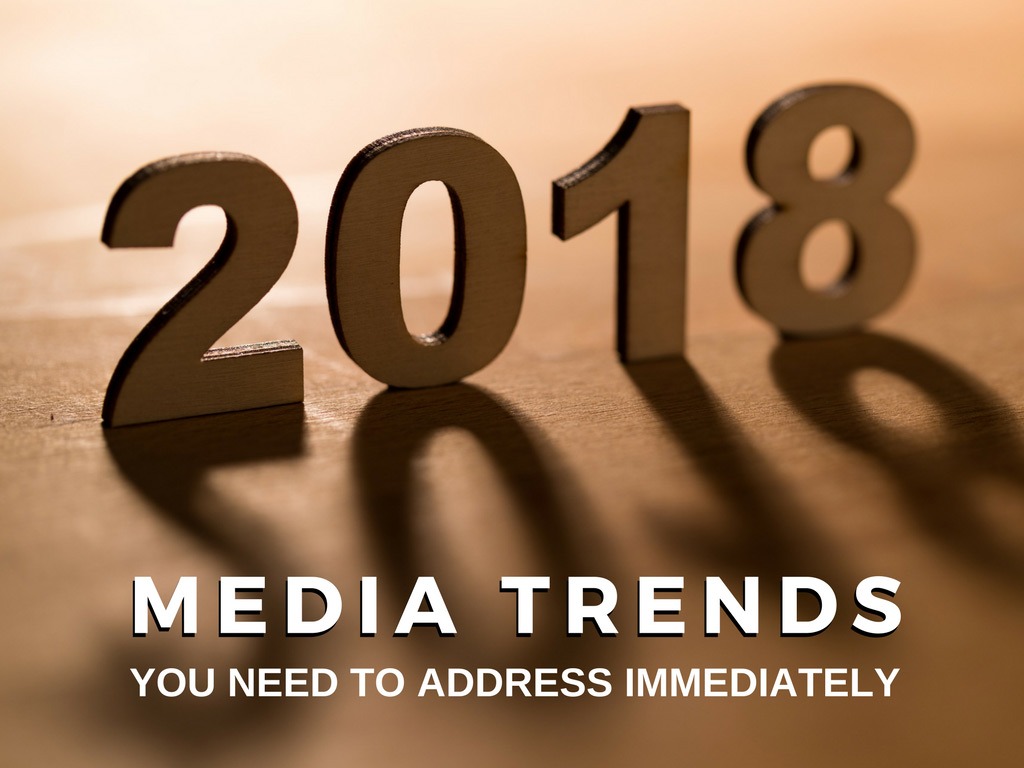2018 Media Trends You Need to Address Immediately
Another year is upon us and I’m back with my annual post on media trends! There’s been a tonne of press around the big A’s (AI, Automation, and Attribution), which the links provided will take you to past posts we have done on these areas. This article is focused on what you need to be addressing immediately, if you haven’t done so already.

Marketing in the Mobile World
We are moving towards a world where activity and transactions will take place on a variety of platforms instead of solely on a brand’s website. A frictionless experience is expected, especially from those coveted millennials.
Facebook’s collection and canvas ads are only the start of this shift for marketers. We only need to look to China and WeChat’s domination of the market (penetration of 95% according to Gartner) to see that integration of multiple platforms and functions across one eco-system is a priority for the big technology companies like Facebook, Google, and Amazon.
Google’s focus on developing localized digital payment services, and Facebook’s acquisition of WhatsApp (with the aim to develop the ‘WeChat of the West’) is further evidence that companies need to be prepared to conduct business in a post-website world. A frictionless experience means providing users with the opportunity to research, plan, and purchase on the platform that they desire.
Not only do consumers want mobile convenience in their purchase experience but they also want it from a service standpoint, which has driven the rise of Chatbots. Chatbots, fulfill that emerging need for “always on” customer service. As more interact with the bots, they will become smarter by the day. The smarter they get, the more customers will prefer this experience.
What should you do now?
Your website isn’t a dinosaur (yet), but your development approach should absolutely be from a mobile-first perspective. Once this is taken care of, you’ll want to test out new platforms and ad-tech that allow you to provide that frictionless experience.
Messaging and chat apps are a good place to start. According to Facebook, 330 million people used FB Messenger to contact a business for the first time in 2017. If Facebook is too daunting due to resource constraints or time zone differences, a good way to increase conversion rates is a web chat application on your site.
If you manage a lot of customer service requests and you haven’t dabbled with chatbots, you need to! This is the expectation now. Not only on your site, but also on the relevant platforms your customers are using. This will, in the long run, make the experience more seamless and convenient for your customers no matter where they are.
Performance Driven Creative
Greater accountability to results has seen a shift in creative strategy for some of our clients and it’s a shift that’s long overdue for the industry. With budgets getting tighter every year, we’re constantly challenged to drive superior performance, and a big part of performance is creative.
Increasingly we’re seeing clients move away from highly polished creative that doesn’t drive performance to creative that’s essentially chosen by the user over a series of iterative tests. We recently tested this strategy with a social campaign and the performance-driven creative outperformed the initial piece with 6x stronger CTR’s and 3x better conversion rates.
What should you do now?
Instead of developing concrete image assets, develop a series of interchangeable assets (headlines, imagery, CTA’s) that can be dynamically served to your audience based on their behaviour. This type of approach is key to driving continuous performance improvements and improving ad relevancy with your audience.
Organic Isn’t Dead
Google is always making changes to its platform and algorithms, and many of those changes are designed to increase ad revenue for the search giant itself. However, when looking at the percentage of searches that lead to a click on an ad, which is 2-3.5% depending on device and search query, versus those that lead to a click on an organic result at roughly 40% (Jumpshot & Moz USA), it’s easy to see that the organic opportunity can be 10-20x that of the paid opportunity.
Voice search is also something to keep in mind. It’s not replacing conventional search volume just yet, rather it’s driving incremental volume around a specific type of phrases like location-based or navigational keywords. However, as more search moves to conversation-based queries, brands need to consider this as part of their overall SEO strategy.
So why aren’t more businesses attempting to capture more of this organic opportunity? The answer is it’s much more difficult than paid and often it’s easier for organizations to buy a paid placement instead of putting in the effort into securing an organic one. Organic requires detailed research into the needs of the audience and then a sustained effort to develop content that is relevant to the pain points and various stages through the customer journey. Paid search can drive results quickly, whereas SEO takes longer to see results; however, we typically see organic traffic convert at a higher rate than paid traffic, so the investment in an ongoing SEO campaign still continues to pay off over time.
What should you do now?
To capitalize and stay organically relevant, you need an ongoing SEO strategy with keyword research that focuses on user intent of search terms. Are they navigational, educational, or transactional? Insights from the research can then be used to develop relevant content related to each stage of the user journey.
Voice search is not going to overtake conventional search anytime soon, but having long tail and ‘conversational’ keywords and search terms in your paid and organic strategies will begin to pay dividends this year, and will only increase from there. Focusing on this trend will ultimately help brands capture the incremental volume from virtual digital assistants.
Happy 2018!
2018 promises to be an exciting year in media! Be sure to keep an eye on these trends that I have shared today and, as always, feel free to reach out if you’d like to chat in more detail.
